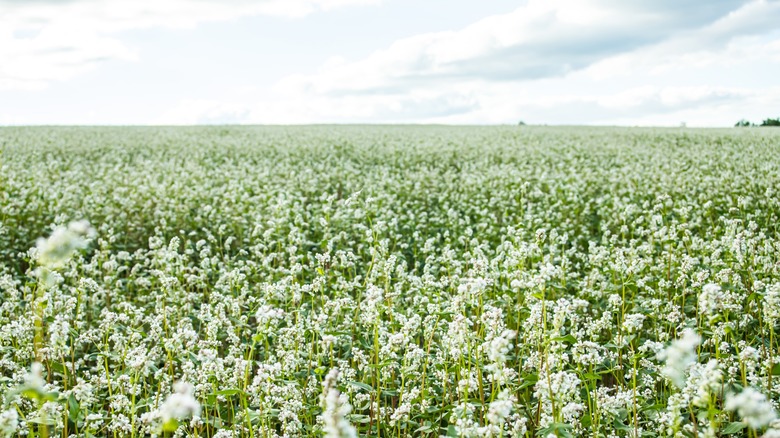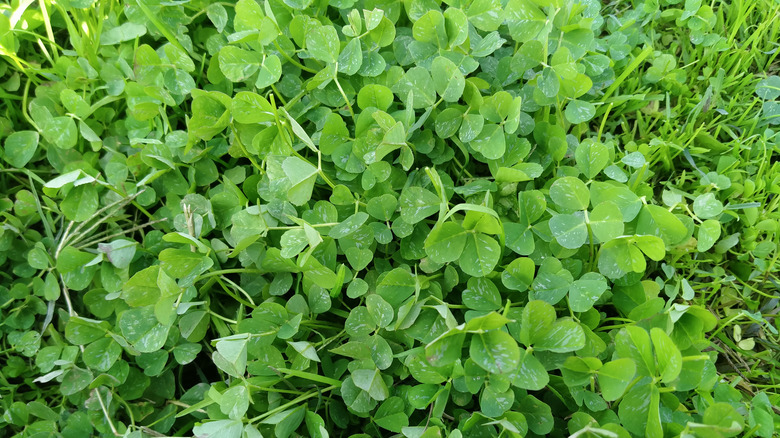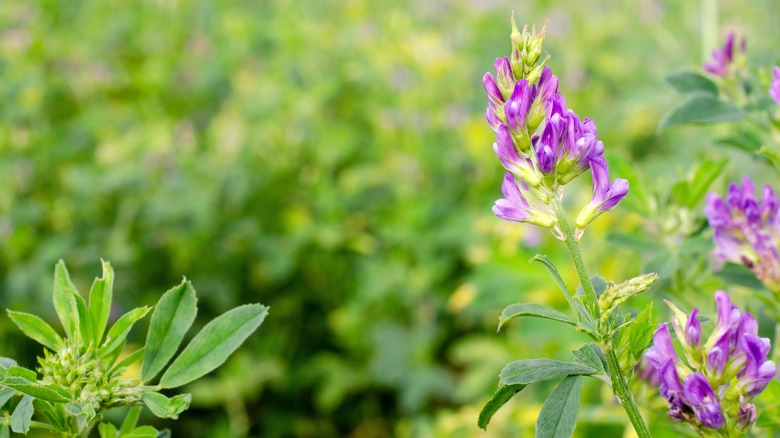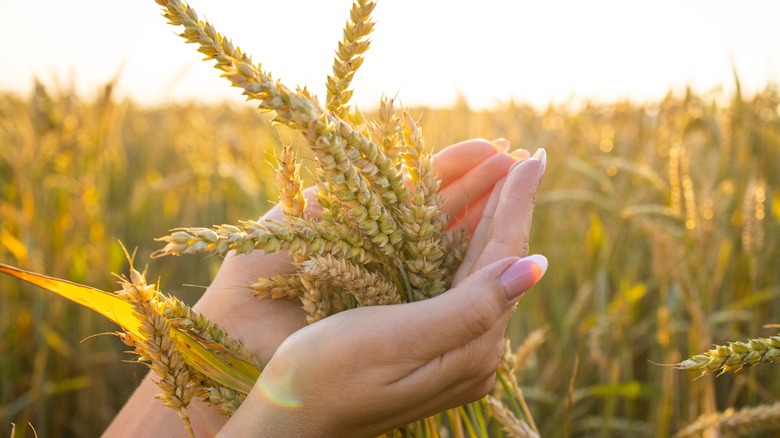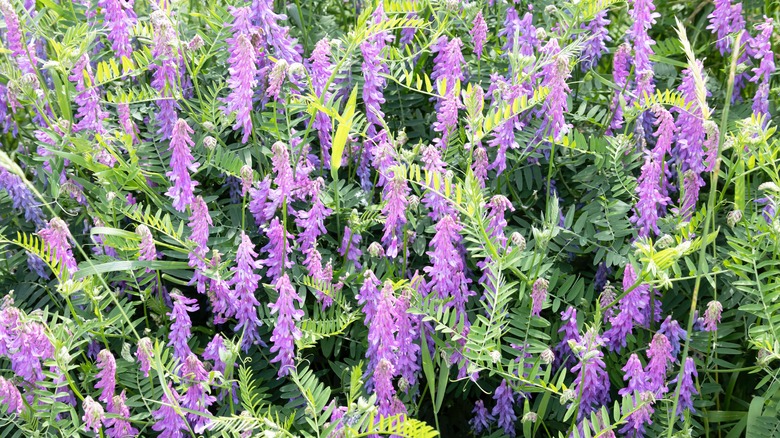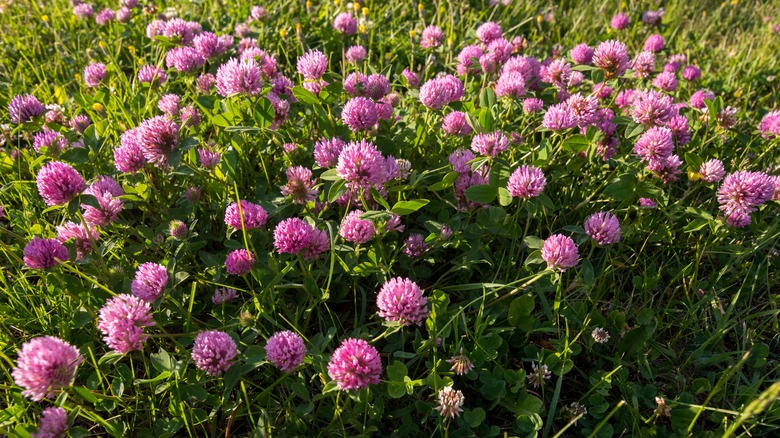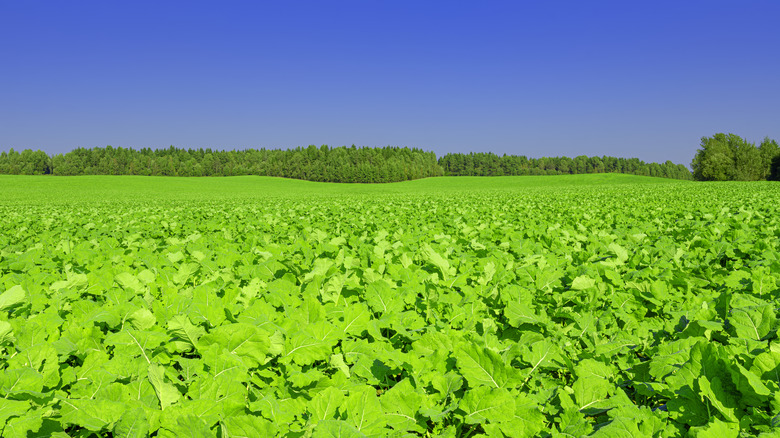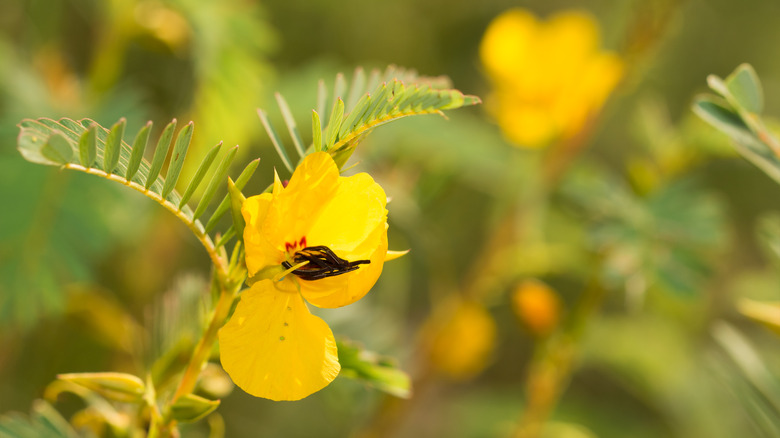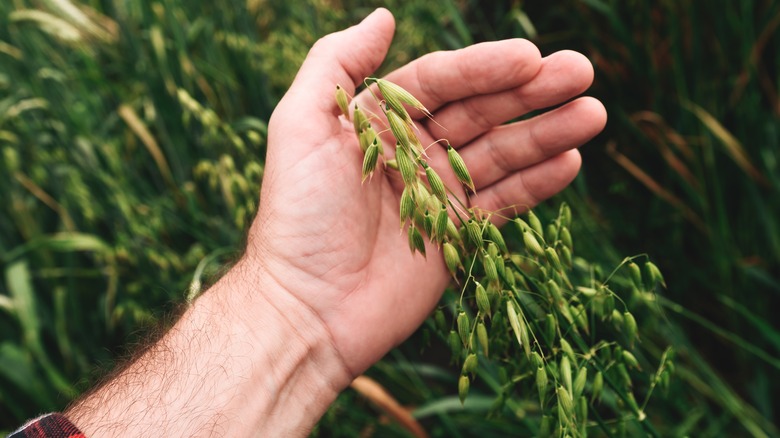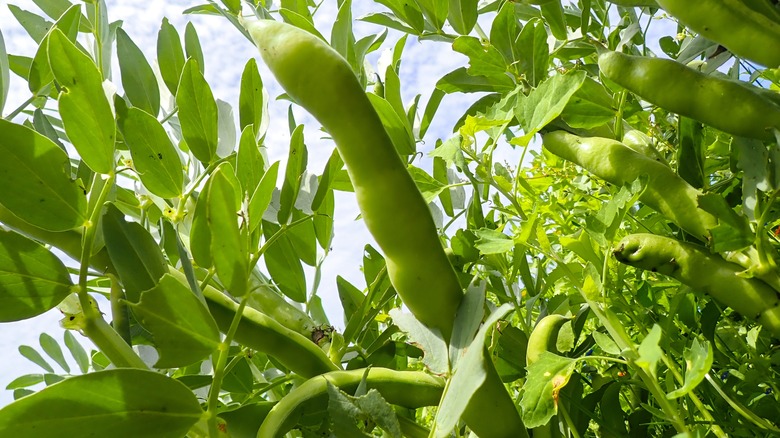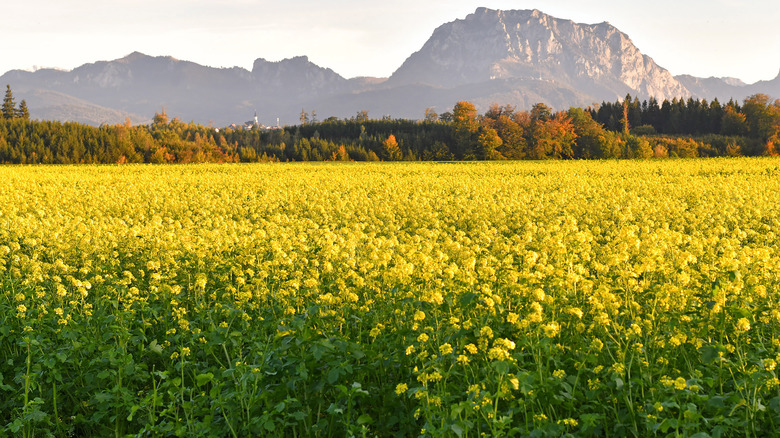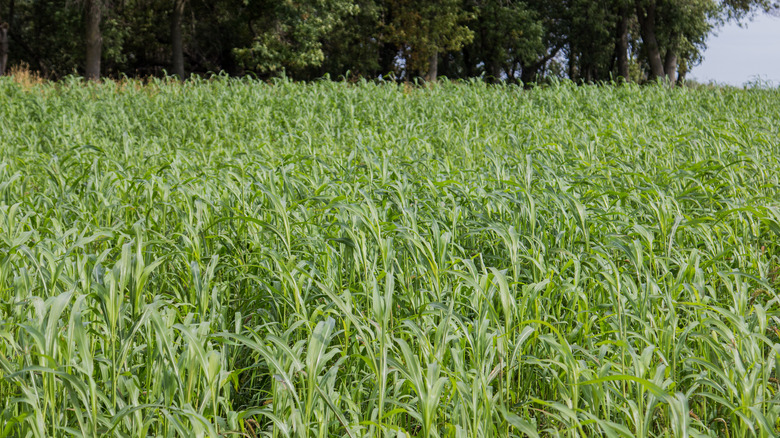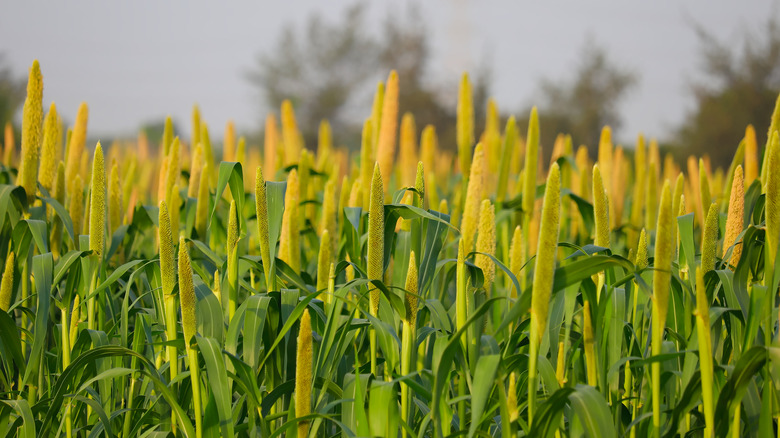Various Cover Crops That Will Help Suppress Weeds In Your Garden
When planning a garden, one of the most important factors you need to consider is how you want to handle weeds. Hand-pulling the weeds can be a tedious task and not practical for larger gardens. Instead, it's best to plant a cover crop with weed-suppressing capabilities. These crops are able to naturally outcompete weeds, as well as smother any existing unwanted plants. Cover crops have a host of additional benefits as well, including preventing soil erosion, improving soil health, and attracting good insects.
There are a variety of cover crops to choose from, such as red clover, fava beans, buckwheat, and pearl millet. When selecting the best cover crop for your garden, you'll want to take into consideration how fast the crop grows, how dense its mat gets, which soil type you're working with, and the climate you live in. Planting season is also a factor, as certain crops are best suited to spring and summer planting, while others require fall or winter planting.
Buckwheat (Fagopyrum esculentum)
Buckwheat is one of the more versatile cover crops. It not only suppresses weeds but also provides grain for preparing a host of gluten-free foods, such as pancakes and granola bars. The beautiful white flowers it produces even attract pollinators to the garden, which benefits other plants. Gardeners love buckwheat as a cover crop because it grows so quickly and can smother those pesky summer weeds.
Buckwheat is recommended for planting during the warmer season, as it is best planted immediately after early summer crops in soil with a pH between 6.0 to 7.5. Planting buckwheat is a breeze, as it can be broadcast (40 to 55 pounds per acre) and raked into the soil. You can expect the buckwheat to reach maturity approximately 12 weeks after planting. If at any time you change your mind about using buckwheat as a cover crop, you'll find mowing or tilling over the grain is all that is needed to kill it.
Subterranean clovers (Trifolium subterraneum, T. yanninicum, T. brachycalcycinum)
If you live in a U.S. Department of Agriculture Plant Hardiness Zone 7 or higher, areas that experience dry summers and wet winters, you'll find subterranean clovers are an excellent choice as a cover crop. They suppress weeds with thick mats that remain close to the ground and attract beneficial insects to the garden. Beneficial insects feast on pests, such as aphids, providing natural pest control and reducing the need for chemical insecticides. Subterranean clovers can also be used in areas that are prone to soil erosion, as they do an excellent job of holding the soil together.
Unlike buckwheat, which is recommended for summer planting, subterranean clover should be sown in the fall. Depending on the variety, you'll find it takes between 85 to 130 days to reach maturity. Trifolium subterraneum does best in acidic and neutral soils, while Trifolium yanninicum prefers wet soil. If your soil is alkaline, you'll want to go with Trifolium brachycalcycinum. While the crop isn't susceptible to disease, it is a favorite of livestock and deer. You'll need to choose a different cover crop if you have any hungry, roaming animals nearby that may be attracted by the clover, as they could inadvertently damage the other plants in your garden.
Alfalfa (Medicago sativa)
Alfalfa works to suppress weeds in two different ways, making it a popular choice as a ground cover. The plant keeps weeds at bay by smothering with its thick and impenetrable mats and via its extended root system. Although weed suppression is important, most home gardeners actually choose alfalfa as a cover crop because of its reputation for creating healthier soil. It adds phosphorus and potassium to the soil and can transfer all-important nitrogen from the air to the earth.
Alfalfa can be planted in both fall and spring, with a sow rate of 15 to 20 pounds per acre and thrives in U.S. Department of Agriculture Plant Hardiness Zone 2 to 9. You'll need to make sure your soil is well-draining, free of rocks and debris, and has a pH between 6.0 and 7.0. Although the crop is considered low maintenance, it's essential to water alfalfa during periods of dry weather to ensure moisture reaches its deep root system. Additionally, adding a slow-release fertilizer will help the crop grow healthy and strong. The time to maturity is 21 to 28 days, and alfalfa can remain for up to 5 years before it needs to be replanted.
Warning: Mowing before alfalfa seed heads mature is best, otherwise you risk the crop becoming invasive.
Rye (Secale cereale)
Rye is a cereal grain that is often chosen as a cover crop in areas that experience milder temperatures. It is known to prevent the growth of certain problematic weeds, such as foxtails, kochia, pigweeds, and marestail, as it produces a chemical that inhibits their growth. Since rye has a fibrous root system, it also competes to reduce other weeds in your home garden. This root system also helps protect against soil erosion.
The best time to plant rye as a ground cover is between September 15th and October 15th. The seeds only germinate when the ground is between 34 and 40 degrees Fahrenheit. The best practice is to broadcast the seeds over moist soil at a rate of 60 pounds per acre. Rye can survive in a variety of soil types as long as the pH falls between 4.5 and 8.0. The downside to using rye is that it doesn't offer complete weed control, so some herbicide later in the season may still be required. It's also susceptible to leaf rust, ergot, wheat streak mosaic virus, and the wheat curl mite. If you're using equipment to disperse the seeds, be aware that the seeds could shatter and clog up machine parts.
Hairy vetch (Vicia villosa)
Thanks to the dense canopy of hairy vetch, weeds are suppressed and unable to germinate and take root. Similar to rye, hairy vetch also produces a chemical that prohibits a variety of weeds from germinating. If your soil has been damaged or is deficient in nitrogen, you'll want to select hairy vetch as your cover crop. It is a known "soil fixer" and aids in soil fertility. Hairy vetch also reduces soil erosion and produces vibrant violet or pink flowers that attract pollinators.
While soil pH isn't much of an issue with hairy vetch, you will need to make sure the earth is well-draining and free of rocks and debris (with an optimal pH between 6.0 to 7.0). The crop is best planted between August and September at a broadcast rate of 25 to 40 pounds per acre. Make sure the ground is nice and moist, or the seeds won't germinate. To prevent hairy vetch from becoming a weed itself, you'll need to mow the crop toward the end of May. Although the plant is susceptible to root rot, the threat diminishes if you practice crop rotation. However, you will still need to keep an eye out for spider mites and aphids.
Warning: Do not consume hairy vetch seeds, as they are poisonous to humans.
Red clover (Trifolium pratense)
Michigan State University reports that red clover is the most popular choice when it comes to cover crops, and for good reason. The denseness of the crop provides excellent weed suppression. Red clover also draws beneficial insects to the garden, like bees, hummingbirds, and butterflies, while adding nitrogen to the soil. It even protects the soil against erosion.
Red clover can be grown in a variety of soil types, is winter hardy, and thrives in moderate climates. It does best with a soil pH between 6.0 and 7.2. Apply clover seeds at a broadcast rate of 10 to 15 pounds per acre, making sure that the seeds aren't planted any deeper than one-half inch to promote germination. Terminating the red clover in the spring can be accomplished by plow, eliminating the need to introduce chemical herbicides into your garden. A few pests and diseases to watch out for include clover root borers, meadow spittlebug, powdery mildew, and root rot.
Warning: Just like subterranean clover, red clover is delicious to cattle and deer and may attract them to your garden.
Forage radish (Raphanus sativus var. longipinnatus)
With forage radish, it's possible to produce a weed-free garden bed by spring. According to a study published by the American Society of Agronomy, forage radish is able to suppress winter weeds in both the fall and the spring. In addition to thwarting the growth of weed seeds, forage radish also keeps the soil from becoming compacted. That means you won't need to worry about tilling the soil come spring. Home gardeners will find this cover crop option also offers a host of other benefits that make it a top choice. A reduction in runoff, improved soil health, prevention of soil erosion, and its ability to minimize nitrate leaching are all reasons to select forage radish as your cover crop.
Plant forage radish between July and early September using a broadcast rate of 12 to 14 pounds per acre. You'll find the radish grows best in sandy or loamy soils with a pH between 6.0 and 8.0. Since forage radishes are found in U.S. Department of Agriculture Plant Hardiness Zones 2a through 11b, you can pretty much grow them in any climate. It's vital that you don't plant the radish in areas that collect moisture, as they do not like to remain wet. Additionally, you'll want to watch for root maggots and flea beetles, as they can damage radish roots.
Warning: Use caution when handling forage radish, as some individuals may experience contact dermatitis.
Partridge pea (Chamaecrista fasciculata)
Suppressing weeds with their thick mats is just one of the many ways partridge pea cover crops benefit a garden. For example, the partridge pea presents delightful yellow flowers that capture the eye of important pollinators, including bees and three species of butterfly (sleepy orange, cloudless sulfur, and little orange sulfur butterfly). These flowers also produce seeds that feed game birds. Additionally, partridge peas mature quickly to provide soil erosion control and have roots that naturally decompose as the plants die out in the winter, adding more nutrients to the soil.
You'll want to plant partridge pea in the fall to enjoy blooms from March to August in soil with a pH no lower than 5.0. The cover crop does best in U.S. Department of Agriculture Plant Hardiness Zones 3 through 9 when planted in well-draining soils, such as sand or loam. When broadcasting seed, disperse 13.4 pounds per acre. Germination can take anywhere from 7 to 25 days. Partridge pea isn't bothered by disease; however, it is a food preference for deer and rabbits. Experts warn that the plant can be invasive, so keep that in mind when choosing your ground cover.
Oats (Avena sativa)
Oats are able to provide weed control, as they are quick to become established and feature thick mats that don't allow any sun to reach weed seeds. The plant's roots also release a chemical that prevents those seeds from growing. Weed suppression isn't the only reason to consider oats, either. Michigan State University coined oats as the "champion of cover crops" because of their many benefits. You'll find the grain also does an excellent job of improving soil health and preventing soil erosion.
Oats will flourish if your soil is well-draining and has a pH range between 4.5 and 6.0. It's best to plant seeds from late August to October at a depth of 1 inch. Seeds should be broadcast at 33 to 110 pounds per acre. If the crop doesn't die out during the winter, you will need to kill it. Otherwise, you risk the oats depleting the soil of nitrogen and moisture. A few pests and diseases to watch out for include aphids, armyworms, crown rust, and powdery mildew.
Fava beans (Vicia faba)
When it comes to using fava beans as a cover crop, the small-seeded varieties are best. The beans are able to compete with weeds, leaving less nutrients for the weeds to grow. While you can plant fava beans alone, they are often included with either rye or wheat. Fava beans provide the soil with lots of nitrogen, while wheat or rye offer added support to weather everything from wind to snow. Another benefit to using fava beans as a cover crop is their ability to add nutrients back into the soil as they decompose, reducing the number of fungal disease organisms to prevent infections.
Anytime between September and November is a good time to plant fava beans as a cover crop. Preferred soils include heavy silt, clay loams, and sandy soils that drain well (with an optimal pH between 6.5 and 9.0). Apply the seeds at a rate of 79 pounds per acre, making sure the seeds are at least 1 inch deep. Fava beans are reported to be susceptible to aphids and bean weevils, but only chocolate spot is listed as a known problem when it comes to diseases.
Brown Mustard Seed (Brassica juncea)
While brown mustard seed doesn't completely eliminate weeds by itself, it does a good job of limiting their growth. In addition, it's an ideal choice in gardens where potatoes and beets are cultivated, as the seeds keep pests, like soil-borne nematodes, at bay. Other important benefits of this fast-growing cover crop include reduced soil compaction and increased nutrition for future plants as the brown mustard breaks up and seeps back into the earth.
Rake the ground where you plan to use the brown mustard seeds to prepare it for planting. It's best to stick with moist soils that drain well and have a pH between 6.0 and 8.0. Location doesn't matter, as the crop thrives in a wide variety of USDA zones. Plant the seeds at a rate of 11 pounds per acre in the early fall. Since brown mustard dies off naturally in the winter, you won't need to till the ground come spring. In certain Midwestern states, the plant can become quite weedy. Pests that frequent brown must include slugs, aphids, and flea beetles.
Sorghum sudangrass (Sorghum x drummondii)
Fast-growing sorghum sudangrass is a hybrid annual grass that offers excellent weed control thanks to its high biomass. The plant's roots also secrete allelochemicals, which effectively kill specific weeds, such as large crabgrass, ragweed, smooth pigweed, and green foxtail. In addition to smothering weeds, this choice cover crop also helps prevent soil erosion, keeps the ground from becoming too compacted, and provides control of pesky nematodes.
Grown throughout the country, sorghum sudangrass thrives in soils with good drainage, such as clay, loam, or sand. Soil pH should fall between 6.0 and 8.0. Seeds should be broadcast at a rate of 40 pounds per acre at least 2 inches deep into the soil. You won't need to mow sorghum sudangrass if you plant it within seven weeks of a frost; however, if you sowed the seeds before this, you'll want to mow when the grass reaches a height of 4 feet.
Warning: This cover crop can be toxic to some grazing animals, so make sure you opt for one of the other options mentioned here if you have cattle, horses, or passing deer that may munch on the plant.
Pearl millet (Pennisetum glaucum)
When it comes to millet varieties, pearl millet is the best at weed suppression, thanks to its high biomass. In fact, the plant's biomass is only surpassed by that of sorghum sudangrass. You'll find the root system of pearl millet is quite fibrous, aiding in the prevention of soil erosion. The plant is even able to keep nitrogen from leaching into groundwater. Not only does pearl millet attract songbirds, but the seeds also serve as food for the creatures of flight.
Pearl millet does best in the southern states and is able to thrive in both wet and dry conditions, even tolerating sandy soils. The plant thrives when pH levels fall between 5.5 and 6.5. Broadcast the seeds at a rate of 30 pounds per acre only after soil temperatures have reached 65 degrees Fahrenheit. A planting depth of one-half to 1 inch is recommended. While you can plant pearl millet by itself, it's often used in a mix that includes such seeds as buckwheat, sorghum sudangrass, and sunflower.

